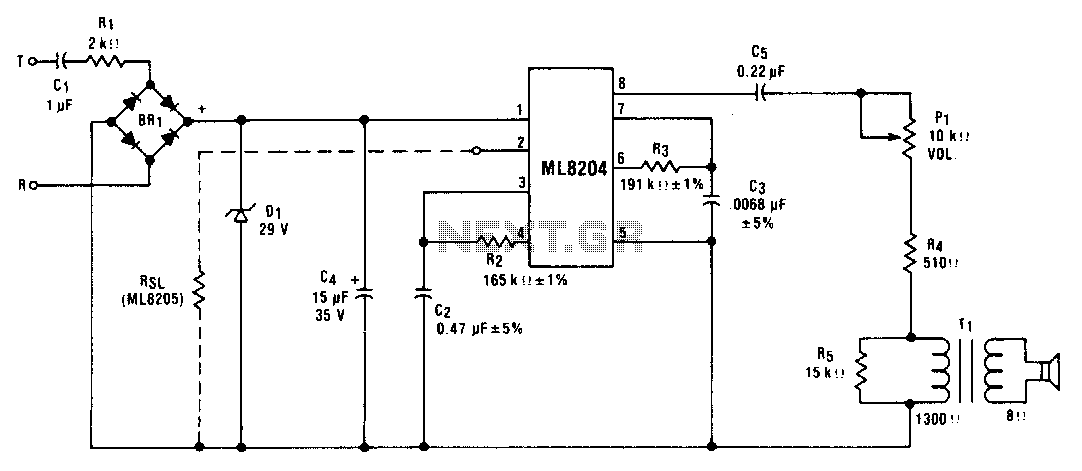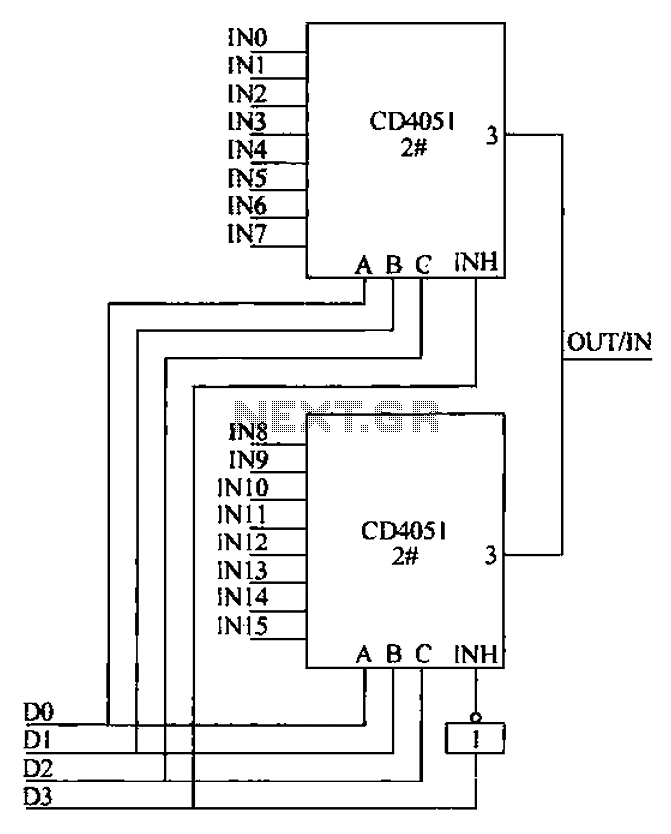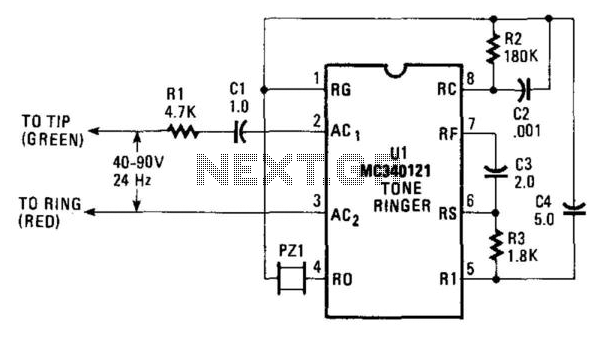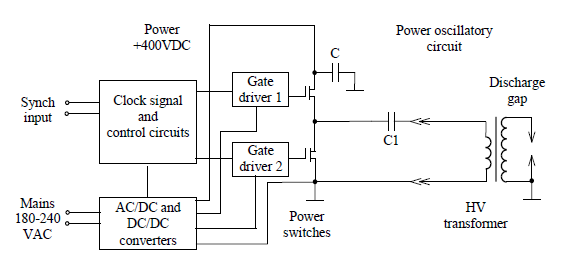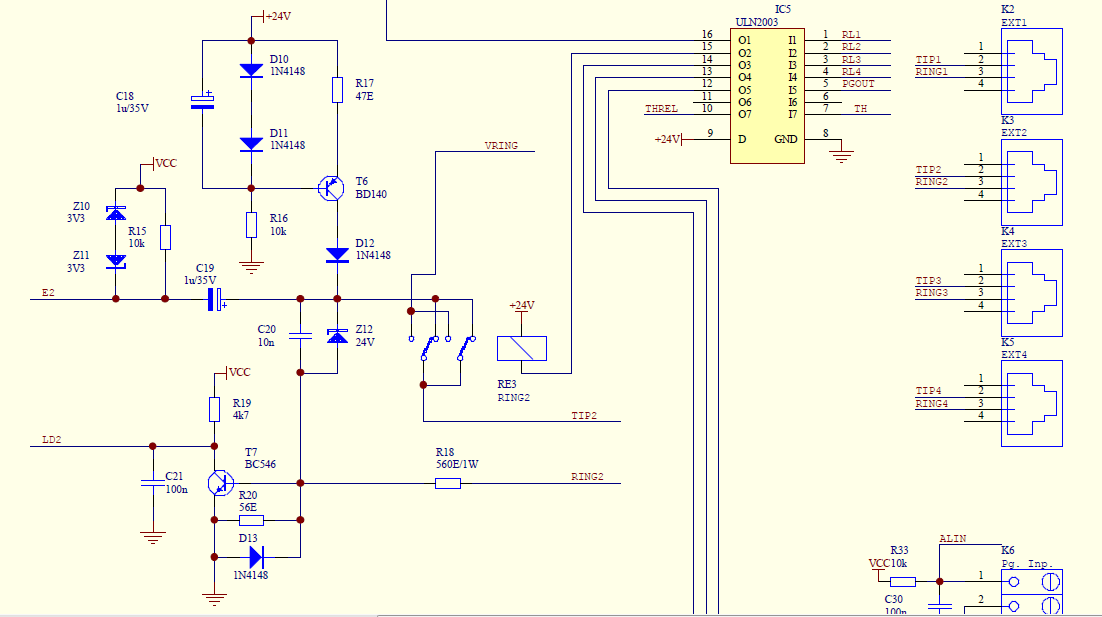
Fitting Extension BT Sockets
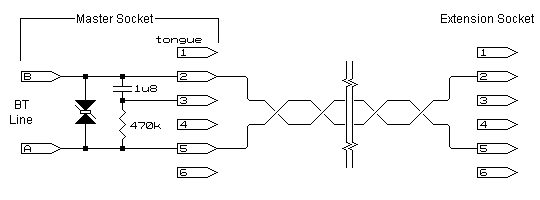
Extending BT telephone sockets can lead to hum on the line or crosstalk between two telephone lines if they are run through the same cable. This issue arises from improper use of twisted pairs. The following section illustrates the correct method for implementation.
To effectively extend BT telephone sockets while minimizing noise and crosstalk, it is crucial to adhere to proper cabling practices, particularly the use of twisted pairs. Twisted pair cables consist of pairs of wires twisted together, which helps to cancel out electromagnetic interference and maintain signal integrity.
In a typical installation, each telephone line should be run through its own twisted pair within the cable. For example, if two lines are required, one should utilize a four-pair cable, where each line is assigned its own pair. The pairs are typically color-coded for easy identification, with standard color codes being blue/white, orange/white, green/white, and brown/white.
When extending the telephone sockets, ensure that the connections are made at the junction points using proper connectors, such as RJ11 or RJ45, depending on the application. The wiring should be maintained in a manner that preserves the twists of the pairs as much as possible, especially within the termination points. This helps to reduce the potential for crosstalk and ensures that the telephone lines operate effectively without introducing hum or noise.
It is also advisable to keep the cable runs as short as feasible to further reduce the risk of interference. Additionally, avoid running telephone cables parallel to power lines or other sources of electromagnetic interference, as this can adversely affect the quality of the signal.
In summary, by following proper cabling techniques and ensuring the correct use of twisted pairs, the integrity of the telephone lines can be maintained, thereby preventing issues such as hum and crosstalk when extending BT telephone sockets.Extending BT telephone sockets can result in hum appearing on the line or, if two telephone lines are taken through the same cable, cross talk from one line to another. This is simply the lack of using twisted pairs correctly, here we show you how it should be done.. 🔗 External reference
To effectively extend BT telephone sockets while minimizing noise and crosstalk, it is crucial to adhere to proper cabling practices, particularly the use of twisted pairs. Twisted pair cables consist of pairs of wires twisted together, which helps to cancel out electromagnetic interference and maintain signal integrity.
In a typical installation, each telephone line should be run through its own twisted pair within the cable. For example, if two lines are required, one should utilize a four-pair cable, where each line is assigned its own pair. The pairs are typically color-coded for easy identification, with standard color codes being blue/white, orange/white, green/white, and brown/white.
When extending the telephone sockets, ensure that the connections are made at the junction points using proper connectors, such as RJ11 or RJ45, depending on the application. The wiring should be maintained in a manner that preserves the twists of the pairs as much as possible, especially within the termination points. This helps to reduce the potential for crosstalk and ensures that the telephone lines operate effectively without introducing hum or noise.
It is also advisable to keep the cable runs as short as feasible to further reduce the risk of interference. Additionally, avoid running telephone cables parallel to power lines or other sources of electromagnetic interference, as this can adversely affect the quality of the signal.
In summary, by following proper cabling techniques and ensuring the correct use of twisted pairs, the integrity of the telephone lines can be maintained, thereby preventing issues such as hum and crosstalk when extending BT telephone sockets.Extending BT telephone sockets can result in hum appearing on the line or, if two telephone lines are taken through the same cable, cross talk from one line to another. This is simply the lack of using twisted pairs correctly, here we show you how it should be done.. 🔗 External reference

